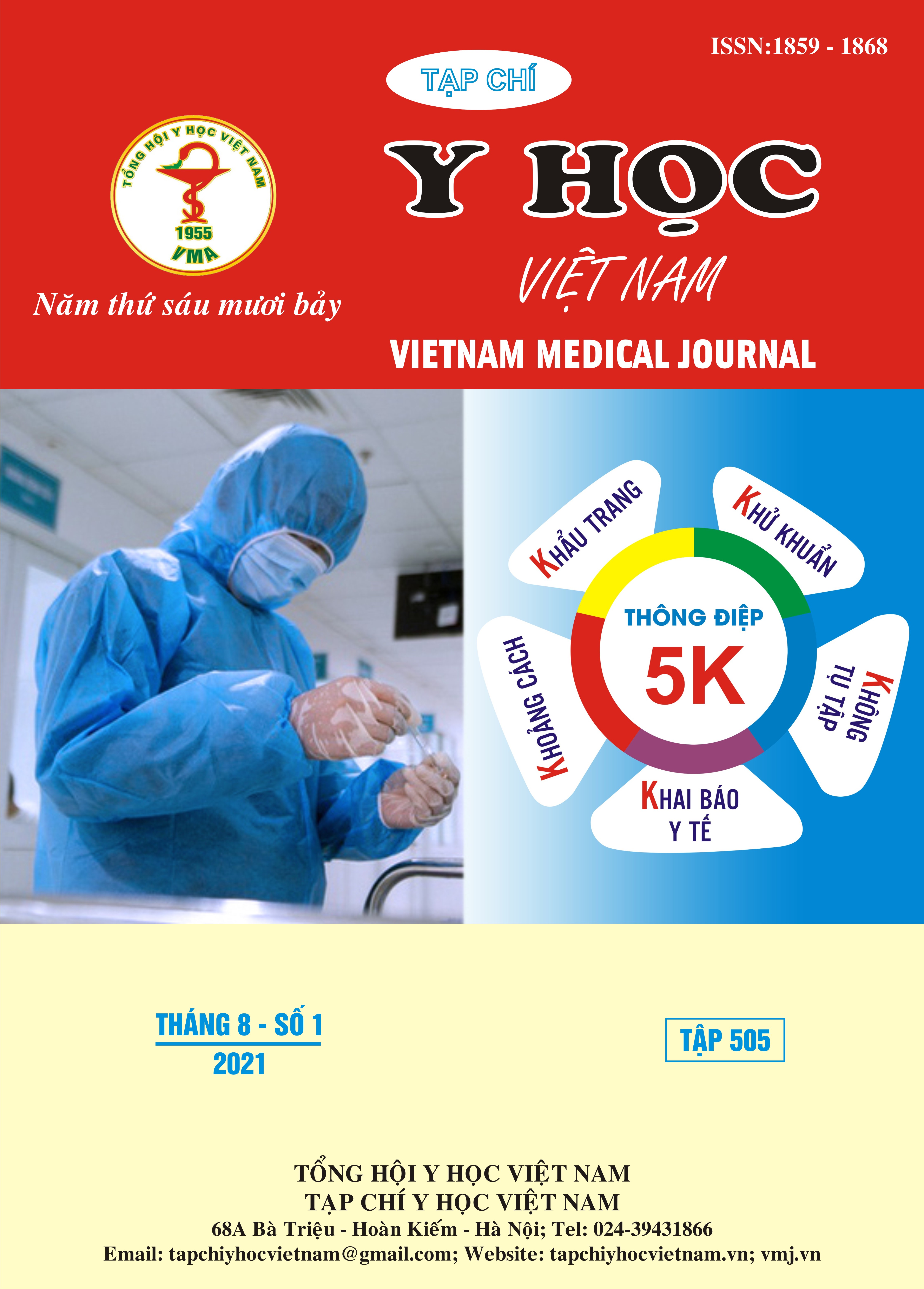CHILDREN WITH AUTISM SPECTRUM DISCORDERS. PREVALENCE AND INITIAL RESULTS OF COMMUNITY-BASED REHABILITATION INTERVENTIONS IN QUANG NGAI PROVINCE
Main Article Content
Abstract
Objectives: to describe the prevalence, characterizes of ASD of the children aged 24 – 72 months and to evaluate the effectiveness of the community based rehabilitation model in Quang Ngai Province. Subjects and methods: A cross-sectional study was conducted from September 2016 to December 2016 on 74,308 children aged 24 – 72 months. An Intervenned community study was conducted from September 2017 to September 2019. Results: 280 children aged 24 – 72 months, account for 0.38%, are detected as ASD. Among the children with ASD, 63.57% are diagnosed severe, 36.34% diagnosed medium and slight. The boys with ASD is 3.1 times higher than girls (p<0.01). The average age of an autistic child is 45.49 months. There was statistically significant between the control group and the intervention group on the age group gender and place of residence (p<0.05). In control group, the average CARS score changed from 39.89 to 37.77, in the intervention group was from 41.09 to 33.67; the average change in the CARS score of two groups was statistically significant with p <0.05. In the intervention group, there were 72.7% of cases improved CARS, 27.3% of cases did not change CARS, the improved CARS score between the intervention group and the control group was statistically significant (p <0.05). The improvement of the total score of CARS in the group of adherence to specialized intervention in hospital, at home and in the network of compliance communities and the non-compliance group was a statistically significant difference (p <0.05). Conclusion: Children aged 24 – 72 months with ASD in Quang Ngai Province account for 3.8‰, rather similar to the ASD prevalence in other similar studies over the world. The hospital-specific intervention model combined with family involvement and community-based mental health care network has achieved good and effective results for children with autism spectrum disorders.
Article Details
Keywords
CARS, intervention, efficiency, autism spectrum disorders, TEACCH
References
2. H. Kaplan, B. J. Sadock và Nguyễn Kim Việt (biên dịch) (2013), Rối loạn sự phát triển lan tỏa, Tóm lược tâm thần học trẻ em và thanh thiếu niên - Nhà xuất bản y học.
3. Nguyễn Lan Trang (2012), "Thực trạng RLPTK ở trẻ em từ 18 – 60 tháng tuổi tại Thành phố Thái Nguyên", Y học thực hành Số (851) 11/2012, tr. 29-32.
4. Blenner S and M Augustyn (2014), "Is the prevalence of autism increasing in the United States?", BMJ. 348, p. g3088.
5. Centers for Disease Control and Prevention (2012), "Prevalence of Autism Spectrum Disorders - Autism and Developmental Disabilities Monitoring Network, 14 Sites, United States, 2008", Morbidity and Mortality Weekly Report. Surveillance Summaries. Volume 61, Number 3.
6. Icasiano F, P Hewson, P Machet, et al. (2004), "Childhood autism spectrum disorder in the Barwon region: a community based study", Journal of paediatrics and child health. 40(12), p. 696-701.
7. Schopler E, RJ Reichler, RF DeVellis, et al. (1980), "Toward objective classification of childhood autism: Childhood Autism Rating Scale (CARS)", Journal of autism and developmental disorders. 10(1), p. 91-103.


